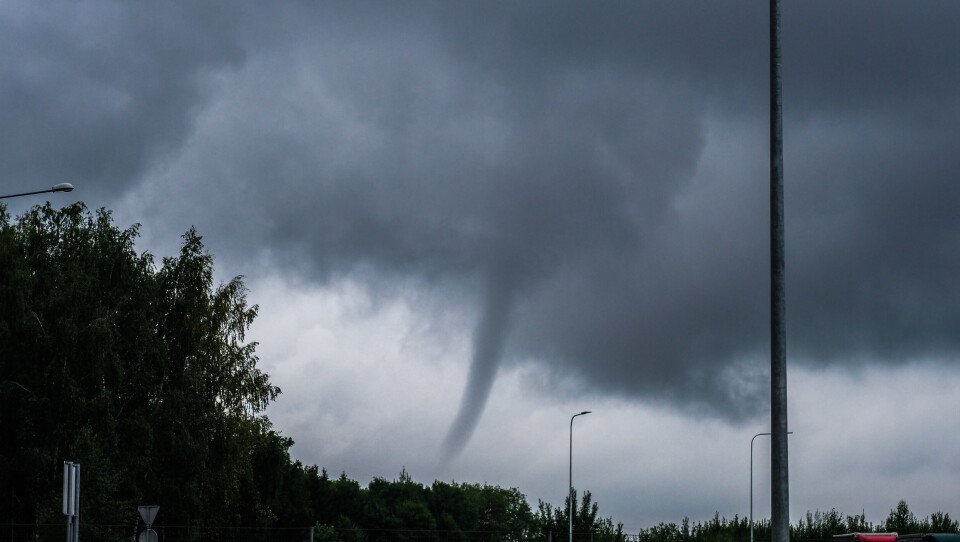-
Farmer protests in France: A64 motorway blockaded again as ‘emergency law’ announced
Local union branches are protesting nationwide but unions are divided on next steps
-
Ryanair reopens Tours-London route for summer 2026
All four of the Irish airline’s summer services have returned to the airport
-
Marine Le Pen appeals public office ban: how could this impact France's 2027 presidential election?
Month-long appeal begins today but no result is expected until summer 2026
Pas-de-Calais tornado: Why is it not an official ‘natural disaster’?
A catastrophe naturelle has not been declared despite winds of 220-270km/h, raising questions over insurance payouts for the damage caused. Several homes were destroyed

A tornado that ripped through Pas-de-Calais in northern France in October is not being declared an official ‘catastrophe naturelle’, despite devastating two villages, the local prefecture has said.
Read more: Dozens of homes destroyed as mini tornadoes hit north France villages
The Pas-de-Calais prefecture judged that the event on October 23 was similar to a simple storm, with “very violent wind caused by tornadoes”, but did not cause other weather events (such as mudslides) that would usually merit the ‘catastrophe’ status.
It said that it was a “climate event” that was already covered in most buildings insurance contracts.
A ‘catastrophe naturelle’ (natural disaster) is an official status, decided by authorities in France. Its declaration requires insurance firms to pay out under the relevant extra clause, due to damage caused by unusual or severe weather events not covered under other clauses.
ALERTE - Sérieux dégâts signalés après le passage d'une #tornade à Bihucourt, dans le Pas-de-Calais. Des dizaines de toitures ont été soufflées. L'alimentation électrique du village a été coupée (La voix du Nord). pic.twitter.com/HtcD6w7Qqr
— Infos Françaises (@InfosFrancaises) October 23, 2022
30 homes rendered ‘uninhabitable’
Two villages, Bihucourt and Hendecourt-lez-Cagnicourt, were particularly affected by the tornado on October 23.
A week after it hit, authorities said that 233 homes were damaged, of which 30 were rendered “uninhabitable”, due to “significant repair work needed over a long time”. In its statement, the prefecture said: “As a result, 27 families will not be able to live in their homes for several months.”
Witnesses reported that a tornado ripped through the area and destroyed properties “in seconds”. In a local bulletin, the mayor of Hendecourt, Denis Sénéchal, said that the “100-metre-wide tornado came through the village, and left significant damage in its wake”.
The village’s power and water supplies were also cut off for 24 hours after the incident. No-one was hurt.
At the time, Interior Minister Gérald Darmanin visited the villages and said that “the state would play its role in supporting those affected”.
Aux côtés des élus et des habitants de Bihucourt, village du Pas-de-Calais violemment touché par une tornade. Aucune victime n’est à déplorer malgré d’immenses destructions. L’État prendra toute sa part dans l’accompagnement des sinistrés. pic.twitter.com/a6Qd8jycru
— Gérald DARMANIN (@GDarmanin) October 24, 2022
No effect on insurance claims?
Yet, the incident will not be considered a ‘catastrophe naturelle’, the prefecture confirmed. It said that this will not affect families’ ability to claim on insurance for damage.
Read also: French town bit by severe hailstorms in June still in damaged disarray
It said: “The 'storm, snow and hail' guarantee is included in insurance contracts. Victims will not be better compensated if a ‘catastrophe naturelle’ order is issued.
“On the contrary, victims can report damage to their insurable property to their insurance company without the need for state intervention, unlike the procedure for recognising the state of ‘catastrophe naturelle’.”
It cited the example of a tornado in Nord, in 2008, which damaged the town of Hautmont. Then, wind speeds reached between 270-320 kp/h, and a ‘catastrophe naturelle’ was declared.
However, the prefecture said: “At the time, the state recognised a ‘catastrophe naturelle’, but for mudslides and ground movement, which are not covered by insurance contracts.”
Read more: France’s ‘catastrophe naturelle’ insurance system: how to claim
What does the insurance code say?
But while the prefecture is clear that the non-declaration will not affect residents’ claims, the insurance code may suggest otherwise. This is due to the very high wind speeds recorded during the tornado.
Article 122-7 of the insurance code states that insurance cover stops “if the maximum surface winds recorded or estimated in the disaster area have reached or exceeded 145 km/h on average over ten minutes or 215 km/h in gusts".
A field investigation found that in the villages affected in October, the maximum wind speed was estimated to be between 220 and 270km/h.
Experts can measure wind speed in a few ways, said one anonymous expert to 20 Minutes. “For example, if the wind has lifted a manhole cover,” they said, “we can calculate the distance travelled in relation to the weight of the cover. In this way, we can determine how much force it took to move it.”
Après enquête de terrain, il apparaît que la #tornade EF3 de #Bihucourt a parcouru au moins 85 km entre 🇫🇷et 🇧🇪 le 23/10.
— Keraunos (@KeraunosObs) October 27, 2022
Il s'agit d'un nouveau record national, dépassant les 81 km de la tornade de Saint-Claude en août 1890 : https://t.co/13XluSSFdC pic.twitter.com/Mow1jPFsym
Strongest tornado in France since 2013
The tornado appears to be the strongest weather event of its kind recorded in mainland France since 2013, when an even more powerful tornado hit Etrochey in Bourgogne. It is also the longest-ever observed, said storm observation specialist Keraunos.
Imposante supercellule tornadique sur le sud du Pas-de-Calais ce dimanche 23 octobre, vue par son flanc oriental depuis le département du #Nord, à l'heure où la #tornade frappait #Bihucourt. Éclairs incessants et mammatus au sud du mésocyclone (à gauche sur la photo). © Keraunos pic.twitter.com/ENxu4SyRQx
— Keraunos (@KeraunosObs) October 23, 2022
Its trajectory shows that it travelled 85km, from Bihucourt to Leuze-en-Hainaut, near Tournai, in Belgium. However, it became weaker as it continued.
Related articles
France recognises catastrophe naturelle across 163 communes nationwide
June flooding and mudslides recognised as natural disasters in France
























